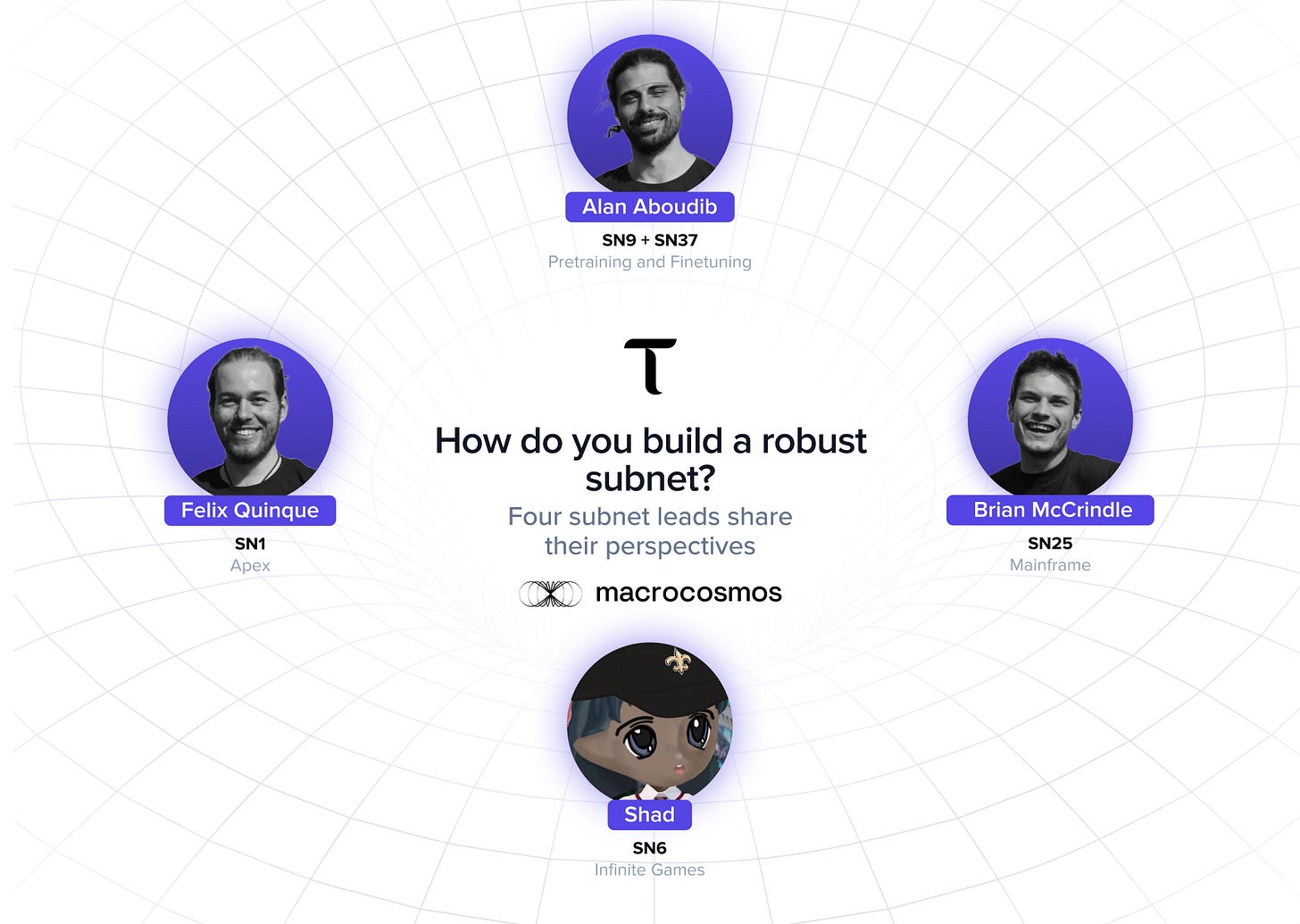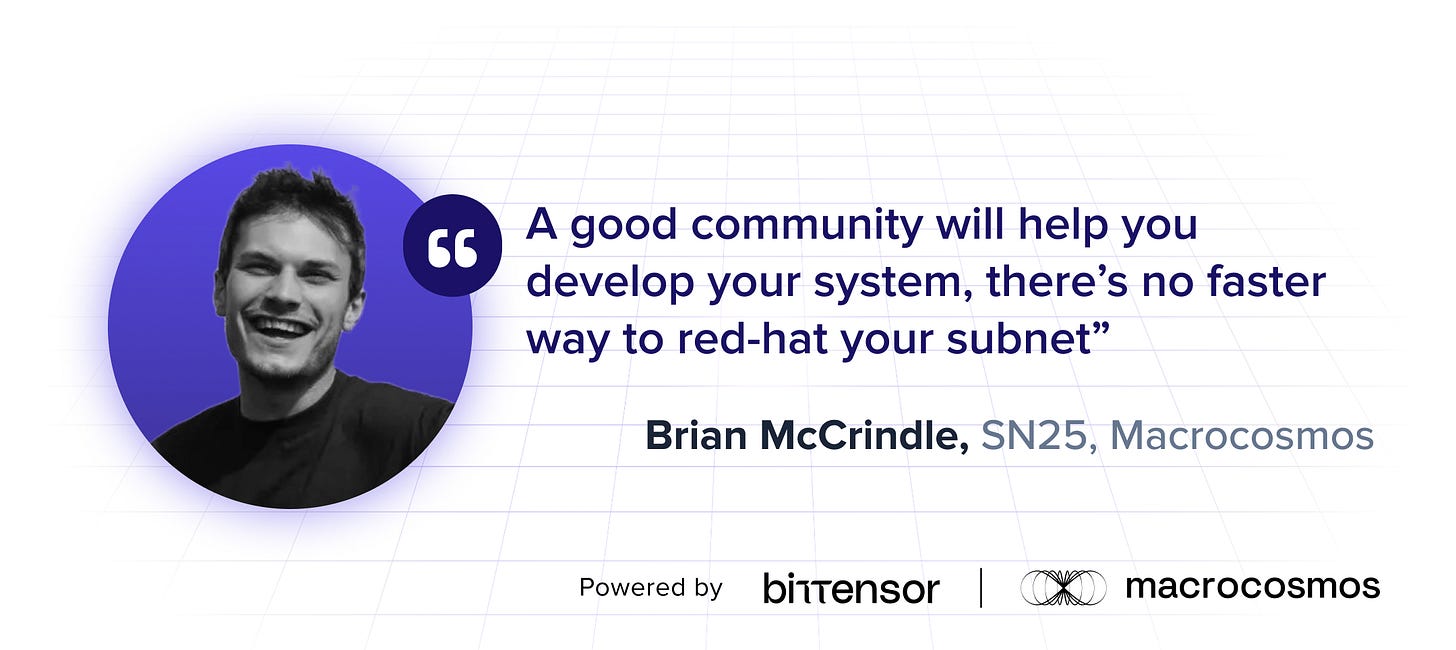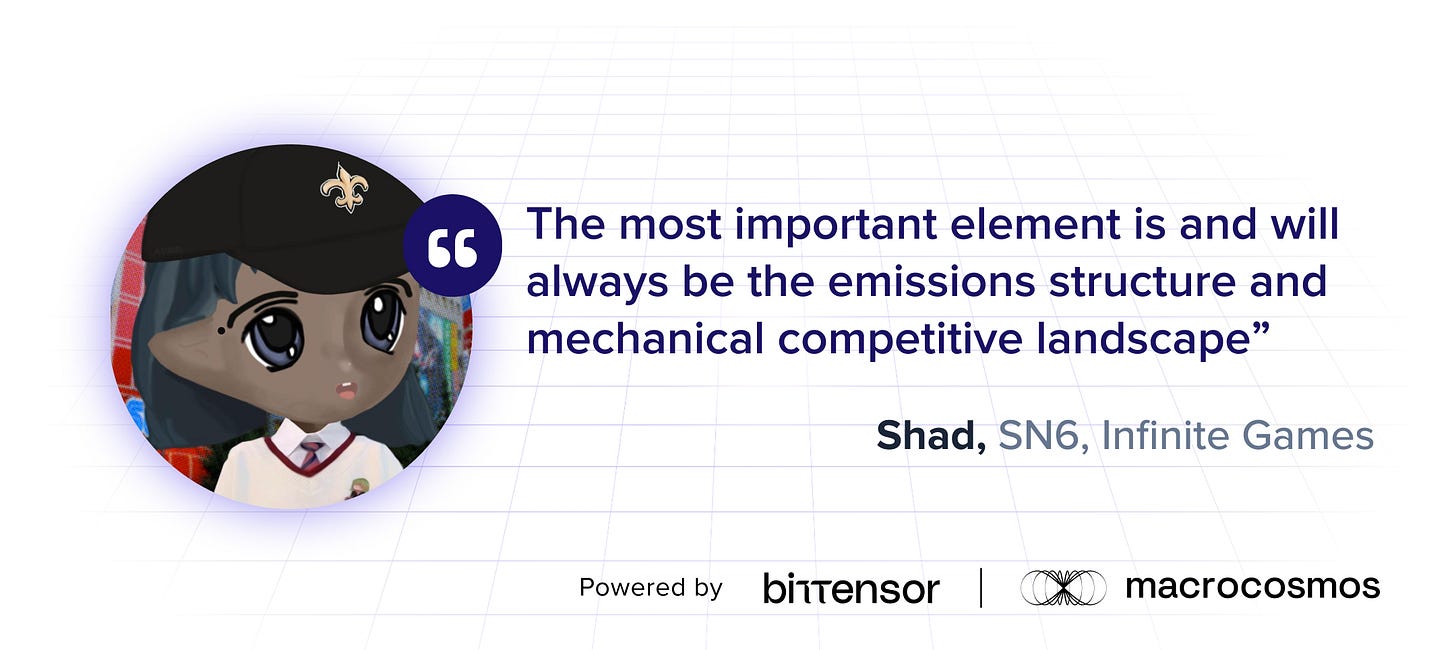How do you build a robust subnet? Four teams share their approach
What does it really take to craft a competition?
Subnets are perhaps Bittensor’s core component, and yet they’re difficult to describe. They function more like ecosystems than standalone, discrete tools. Due to this diversity, designing an optimal network requires a mix of technological, sociological, and economic knowledge. You’re creating a community, set with different participants, all with their own intentions and perspectives. The goal of a subnet designer is to find ways of aligning their incentives that encourage each participant shine in their own right, all while collaborating in a single digital space.
There’s no unified guidebook for making a subnet - it can be tackled from multiple angles. As operators of five subnets, we decided to speak to our team and partnering subnets within Bittensor, asking them to share their thoughts on what makes for optimal subnet and competition design.
Felix Quinque – SN1, Apex
As a competition designer, you need to understand the tasks being given, even if you’re not actively competing in them. Think of it as similar to coaching somebody in a sport. Even if you’re not playing in tournaments yourself, you need to know the sport really well. You must understand the rules, the techniques, and the overall landscape so you can teach and advise. You need to have the kind of understanding or the ability to do it yourself in order to be able to effectively set up a competition
When you’re designing a competition, you ideally want to have simple rules. The more complex the scoring, the more likely there will be an exploit you didn’t think of, or weren’t expecting. Think of it like tennis - there’s a lot of precise rules to tennis, which make it easy for issues to arise. You get more people in a tennis match calling the umpire than you do for something simple to evaluate like a 100m sprint, where evaluation is much simpler. The simpler the reward structure, the better it is for the competition just because it makes it way more stable and way more robust to any type of exploit.
Brian McCrindle – SN25, Mainframe:
The best incentive mechanisms are simple. Not only are they easier to work with, but the adoption of mining becomes easier as more people can quickly get involved. Even simple systems are complicated in practice, as there are always edge cases and exploitable pieces that you wouldn't have caught in the initial development. Keep it simple
A good community will help you develop your system. Miners are incentivized to break your system to obtain the largest rewards but if you use this as a feedback loop, there is no faster way to red-team your subnet. Accepting that exploits will happen, and almost encouraging them, will allow you to develop better systems faster.
Alan Aboudib – SN9, Pretraining & SN37, Finetuning
When you are trying to solve a problem, you need to adapt it to fit within Bittensor’s architecture. You need to ask if it can be done in a decentralized and adversarial environment. Is it robust to attacks? You must be mindful of known knowns, known unknowns, unknown unknowns, and everything in between. If there's a potential exploit, someone will find it. That’s just the nature of these systems. You can't rely on hope—it will break. You have to be ready to detect and fix it fast. So we monitor everything, we prepare for failure from day one
Alongside this, you must make sure the competition and its goals are interesting - this is especially important in a dTAO world, where there’s market dynamics associated with every subnet. There’s no room to experiment with potentially useless ideas; you must look for a product-market fit, and treat it like a business in its own right. Proper marketing, proper communication, and a sleek design are needed. This means subnet design is more than just infrastructure.
Shad – SN6, Infinite Games
The most important element is and will always be the emissions structure and mechanical competitive landscape created onchain. After that, the most effect element for subnet compeition is showing of the allure of the runaway winners. For outside builders, they must be envious of the bootstrapping capabilities that Bittensor has, and the progress that winning Subnets are making, without the need to go begging to VCs.
The complex beauty of subnet design
These four perspectives show us that subnet design is not just a technological task, but an interdisciplinary endeavor. It’s as much about the participants as it is the outcomes. This is the unseen side of Bittensor, yet it’s a critical component of the entire network.
And for all the technical brilliance, ultimately subnet design is as much an art as a science.
To learn more about subnet and competition design, come and chat in our Discord and Telegram
Tune into our Inventive Mechanisms series where we showcase backend innovation, livestreamed on X.








